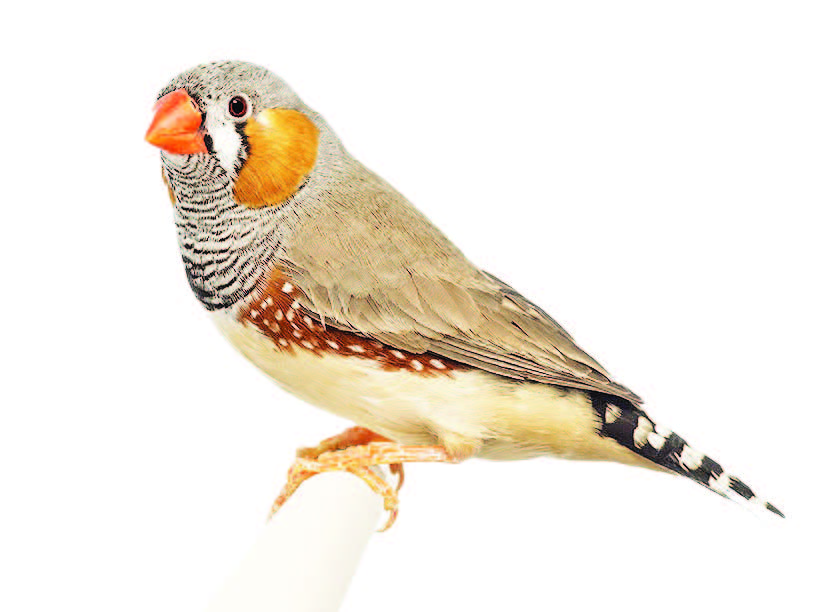Small avian pets are for people who enjoy seeing beautiful colors, hearing musical chirps, and having an animal companion with a great personality. Parakeets, African lovebirds and budgies are most popular among small bird hobbyists.

My earliest encounter with small birds was during my elementary school years. I studied in a simple neighborhood school wherein students rushed outside the school after class because vendors sold all sorts of items.
On one of those days, I saw a small bird with different colors, which I later on learned were artificially painted. They were Eurasian tree sparrows, which I saw in Europe and Asia as an adult. I bought one and was so excited to bring it home. I started building a small cage and my mother noticed, so she explained that the bird was wild-caught, which meant my new pet might not last. I obediently trusted my mother’s advice and set the bird free. I was glad I did. Since then, I focused more on pigeons, tropical fishes and dogs.
African lovebirds then became popular, along with parakeets and budgies. During a short trip to Hong Kong, I noticed that on Sundays, local residents met at a small park carrying small bird cages. I learned they were birds called finches.
Feeding Finches
Finches are naturally seed eaters: Seventy percent of their diet consists of seeds. Though I am guilty of feeding my finches 100 percent seeds, surprisingly, they thrive well and are very active. Millets and canary seeds are the most common feeds provided to them.

I use a ceramic dish so the birds won’t accidentally tilt the feeder. Some hobbyists use self-maintaining feeders which provide continuous food lasting a day or two, depending on the number of birds. I personally do not like the idea, since birds are healthier and more active if there is just enough food available.
A continuous supply of water is very important. You can even add bird vitamins to it to provide more nutrients.
Important feeding notes
1. Do not reuse excess food.
2. Always wash fruits and vegetables before feeding.
3. Dried fruits and vegetables are acceptable but must be in very small amounts due to their high sugar content. Make sure these are organic and no artificial preservatives are added.
4. Do not place water or food bowls under perches to avoid contamination from droppings.
Housing
Maintain the temperature between 65°F to 70°F. Place them in an area that is well-lit and away from drafts. Be careful when placing them near walls – I experienced having mice enter the cages and killing my finches. Make sure there are screens or wires that are close enough to each other to serve as barriers so that finches or mice cannot pass through.

A rectangular housing is preferred to a circular type. Perches should at least be three inches long and 1/4 to 1/2 inch in diameter.
There are a variety of perches that could prevent arthritis. Do not use sand paper covers on perches.
You may also need a metal grate over the droppings tray to keep the bird away from droppings. Line the droppings tray with habitat paper or appropriate substrate for easier cleaning.
Finches with me
1. Zebra finch

Probably the most popular. They are also called chestnut-eared finches & spotted-sided finches. Male finches have black and white bars on the throat and breast, orange cheek patches, and brown on the sides of the body. Meanwhile, females do not have the same features as the male finches but are gray in these areas. They are active and fun but not noisy. It is very easy to care for them.
2. Society finch

These birds are very comfortable with people. They have no problem eating, bathing, or singing in the presence of humans. Society finches do not exist in the wild. They are domesticated species, and there is much debate over their origins. These are very social birds and are accustomed to being handled by people. They make such excellent parents that they’re often used to foster chicks of other birds in the family.
3. Estrildidae

Their inquisitive, social nature may interfere with the breeding of shyer species when housed together. Society finches can be housed with other finches including other societies, such as Zebra finches, Gouldian finches, and Spice finches.
Finch be mine
If I could set up a home for more finches, I would include these in my wishlist.
Java

I love this bird since the first time I saw them years ago, maybe because I like gray and black colors. They are also known as Java sparrows. They have grayish-cinnamon colored breasts and bellies with large white patches on their cheeks. They are sociable with other finches but not with humans, and they tend to be relatively quiet. They require an average difficulty level of care. Importantly, Java finches rarely gets sick.
Gouldian

When I saw the Gouldian finch, I thought they were toys. Their colors are ridiculously beautiful. They are moderately chatty birds and are easily stressed by human handling. They are not easily domesticated and are not for beginners.
Owl

Also called Grass finches, they have two black bars above and below a whitish-beige chest, one bar circling under the chin. The wings are brown with white spots, and the mask on the face is white. The beak is gray and the eye is black. They literally look like tiny owls. They are active and curious birds and are easy to care for.
The beauty of writing in a magazine like Animal Scene is that it always reminds me of my love for pets. I believe every home should have a finch, too.
This appeared in Animal Scene magazine’s May issue.





